If you’re looking for low-maintenance, water-smart plants, succulents are the way to go and these indigenous crassulas are just what your garden needs
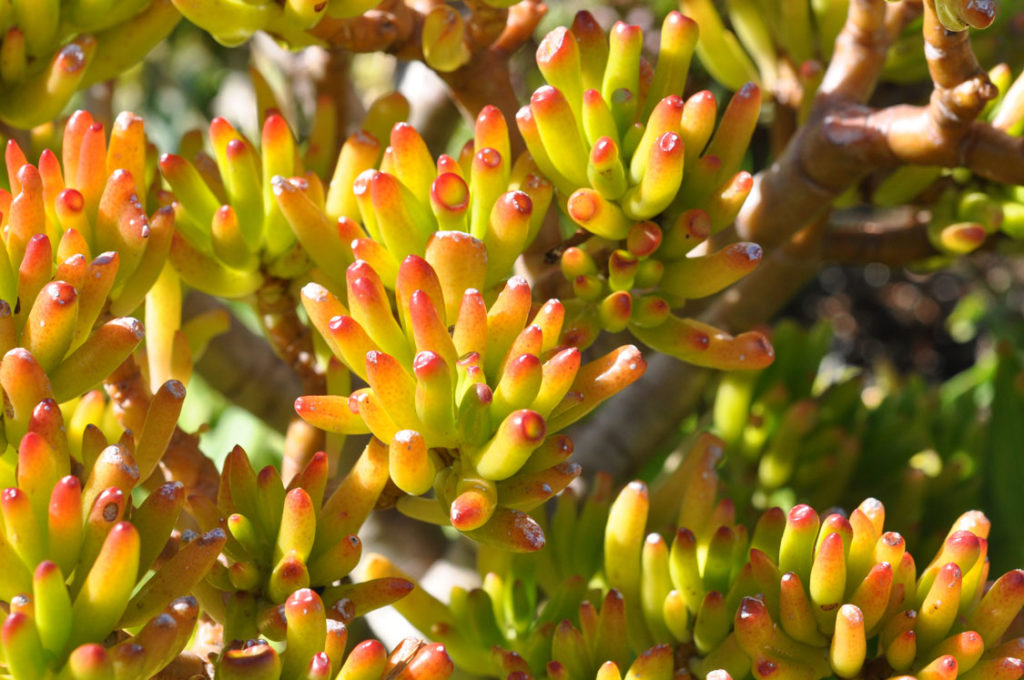
C. ovata ‘Gollum’

Hummel’s Sunset
Crassulas, along with other succulents like cotyledons and kalanchoes, are members of the stonecrop or ‘plakkies’ family. What sets them apart is not only their number (150 species in South Africa), but also their diversity, shape, form and size.
YOU’LL ALSO LOVE: An easy way to propagate succulents
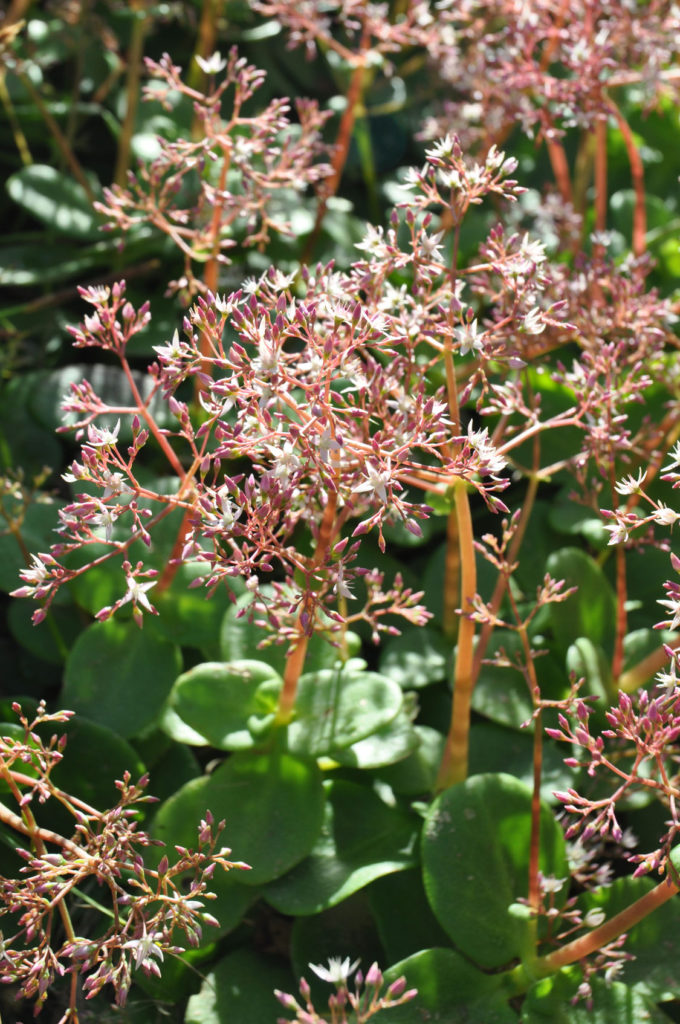
C. multicava
READ MORE: 7 Succulents anyone can grow
SHRUB TYPES
- CRASSULA OVATA This stubby, 1,8m-high shrub has a thick trunk, succulent fleshy leaves and clusters of pinkish flowers that appear during winter and into summer. New cultivars are ‘Hummel’s Sunset’ with its gold-tinted foliage and ‘Gollum’ with green fingers tipped with gold that appear to be topped by a suction cup reminiscent of the character in J.R.R. Tolkien’s novel The Lord of the Rings.
- ARBORESCENS, from the Karoo, also known as the silver or Chinese jade plant, is similar to C. ovata but has silvery grey leaves and is more drought tolerant. Able to withstand wind and coastal conditions, it grows in sun or semi-shade. Plant among other shrubs or succulents like aloes and cotyledons, as an informal hedge, in containers or train as a bonsai.
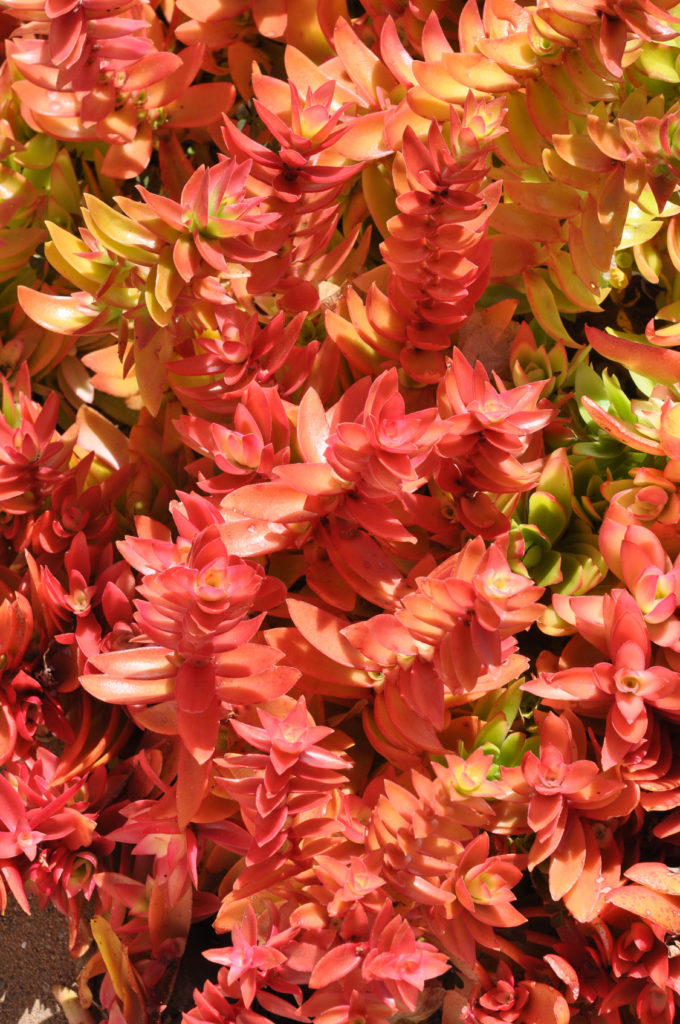
C. capitella ‘Campfire’
GROUNDCOVERS FOR SHADE
- MULTICAVA, the fairy crassula, is an invaluable groundcover for areas where there’s little sun and lots of root competition. Growing 20cm high, it has rounded fleshy green leaves which give a lush look while the froth of tiny white flowers on tall pink stems turn the garden into a wonderland from winter into spring; baby plants also develop on the faded inflorescences. The leaves of ‘Purple Robe’ are plum underneath.
READ MORE: How to create a waterwise garden
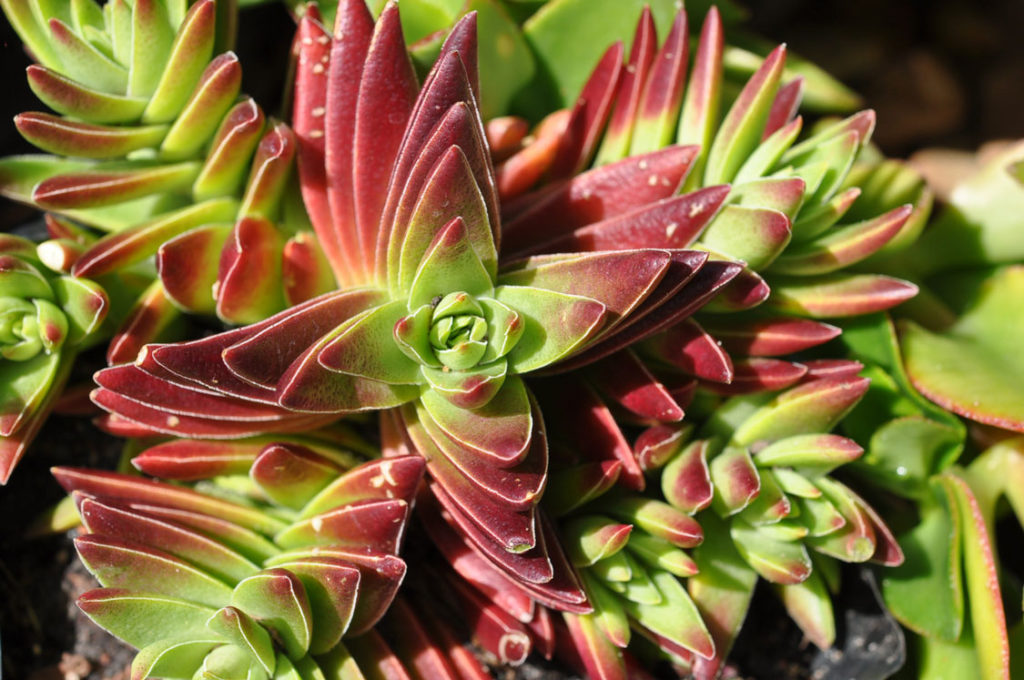
C. capitella subsp. Thyrsiflora
FOLIAGE COLOUR
- CAPITELLA ‘CAMPFIRE’ Grow this 20–40cm prostrate groundcover for its rosettes of eye-catching leaves which turn lime green when in the shade or well watered. They become a rich orange and even red when exposed to the sun and water is withheld. Keep plants neat and compact by removing the insignificant flower stalk. It’s quick and easy to propagate, and in inland gardens, does best in semi-shade. Plant en masse and in containers.
- CAPITELLA SUBSP. THYRSIFLORA or red pagoda is a compact succulent with four rows of triangular-shaped leaves that hug the stem as it grows up from a small rosette of leaves. These take on a deep maroon to red flush when stressed. It’s great in a rockery.
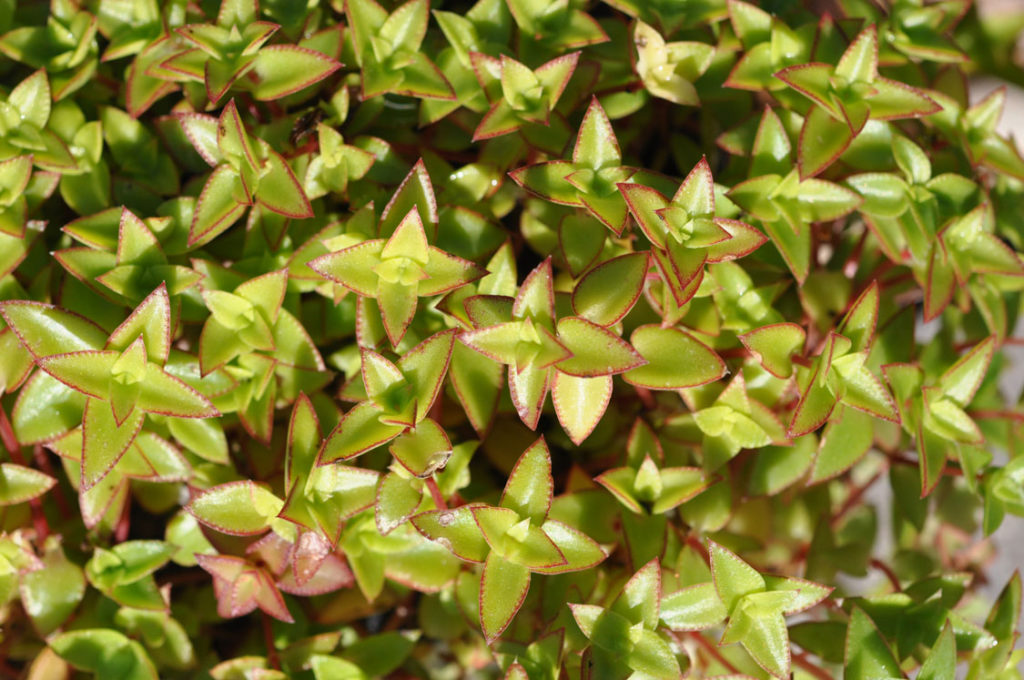
C. pellucida subsp. Brachypetala
CARPET-FORMING VARIETIES
- PELLUCIDA SUBSP. BRACHYPETALA is compact with pointed lance-shaped leaves edged with red. Many carpet-forming groundcovers which root at nodes will grow in both sun and semi-shade. Plant swathes of different species en masse to show off their diversity. Growing 5–15cm high, they’re ideal in vertical gardens, in hanging baskets, cascading over retaining walls and in rooftop gardens.
- EXPANSA SUBSP. FRAGILIS Its name comes from the fact that pieces break off easily. Tiny bead-like greyish-green leaves form a flat mat on sandy soils but also look good cascading from a container; it prefers semi-shade.
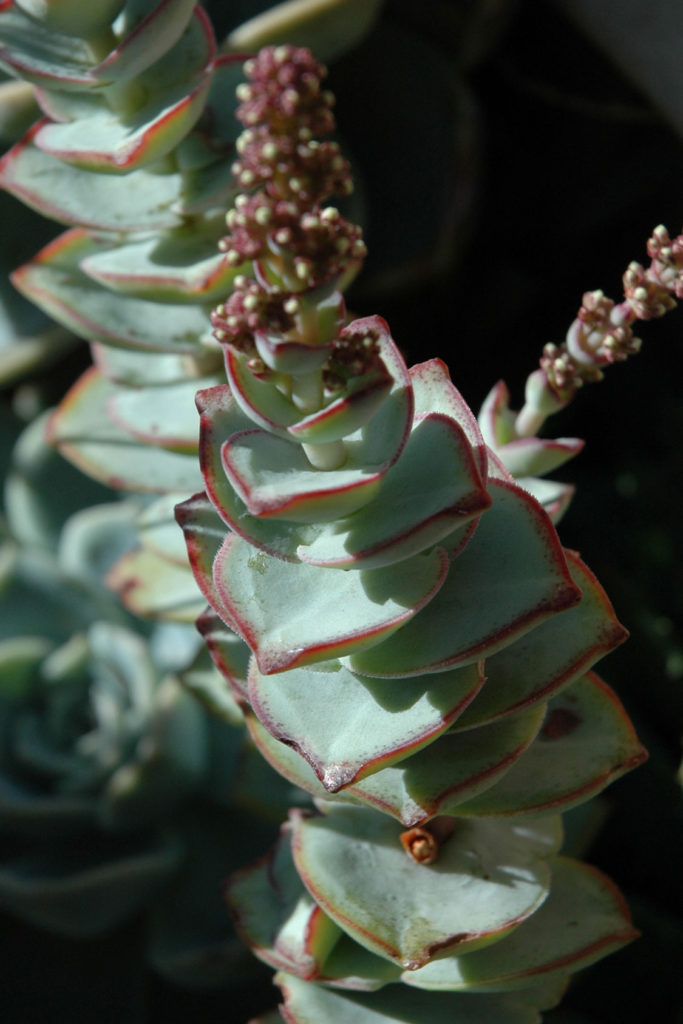
C. perforate
CONTAINER SUBJECTS
- PERFORATA Also known as ‘sosatieplakkie’, this unique, drought-resistant plant has pairs of triangular, grey silvery leaves, edged in red, stacked up its stems. Growing 30cm high, it’s good for a rockery.
- MUSCOSA ‘RASTAFARI’ or lizard’s tail grows 10–15cm high and is named for its dreadlock-like stems covered in overlapping scales. It’s happy in sun and semi-shade. Its unusual texture and colour makes a good contrast to other crassulas in mass plantings.
READ MORE: Potting up succulents
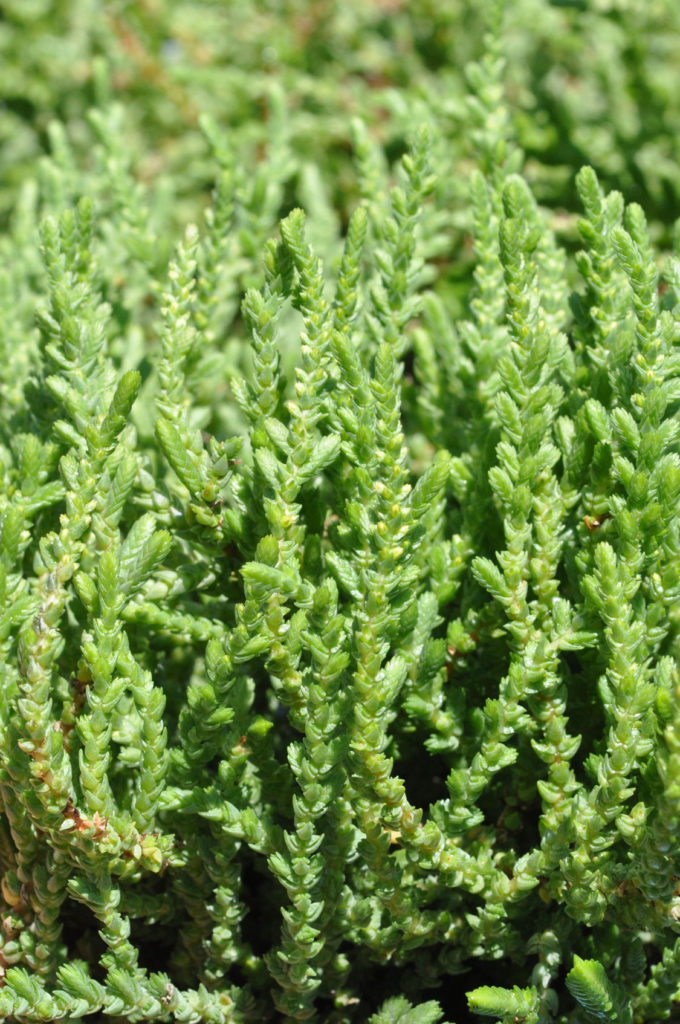
C. muscosa ‘Rastafari’
READ MORE: 3 Container ideas for succulents
COLOURFUL FLOWERS
- COCCINEA, red crassula or klipblom is an impressive 60cm-high perennial shrublet that produces umbels of red flowers in January. Even when not in flower its leaves are attractive. Plant it in full sun in a rockery or flower bed, or in summer-rainfall areas, in containers. It prefers acidic sandy soil and must be well watered particularly in areas with dry winters. As it’s short-lived, replace it with cuttings taken every two years or so after flowering.
- RUPESTRIS, the concertina plant, is a well-branched shrublet with pairs of red and yellow margined leaves set at right angles up the stem. It grows 50cm high and has compact heads of pink flowers from winter to spring. Plant it in sun; it’s tolerant of some frost. It’s best in containers, near rocks or in interlocking retaining wall blocks.
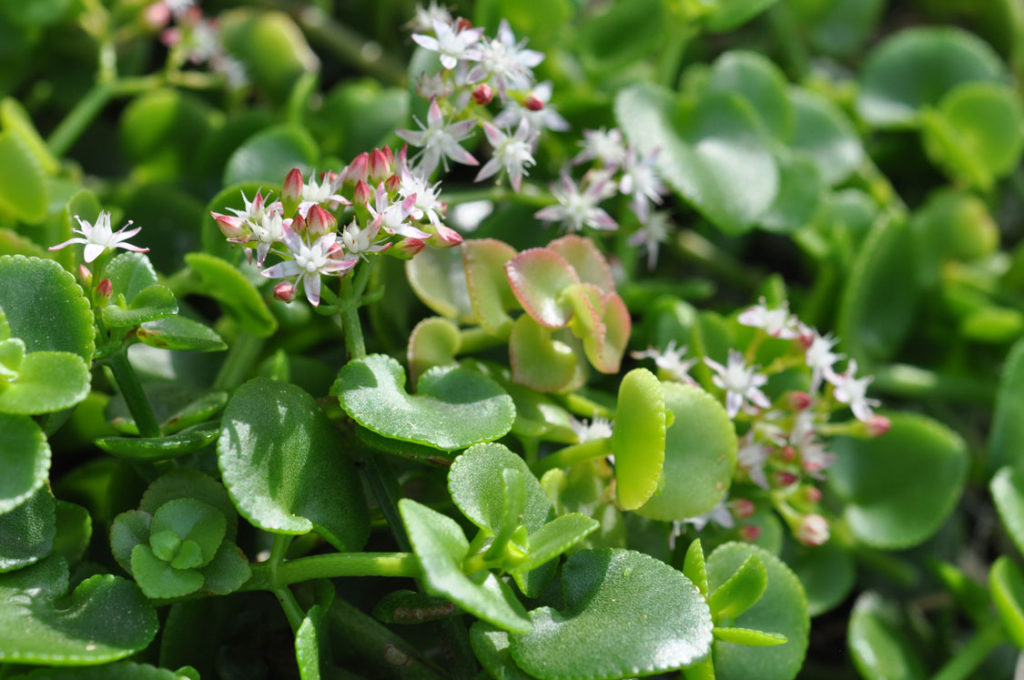
C. expansa subsp. Fragilis
GOOD REASONS TO GROW CRASSULAS
- Most crassulas are water wise, although some grow in damp areas and even in water.
- They’re invaluable as groundcovers, particularly in dry gardens.
- They’re worth growing just for their interesting leaves; some take on orange or red tones when deprived of water.
- They’re versatile, ideal for containers, hanging baskets, cascading down retaining walls, vertical gardens, and, as they have shallow roots, rooftop gardens. Many are ideal for small gardens.
- They’re easy to grow from leaves and stem cuttings. Allow these to dry off before planting in river sand.
- Their flowers attract butterflies and insects.
- Some, like tetragona, C. arborescens and C. sarcocaulis make delightful bonsai subjects.
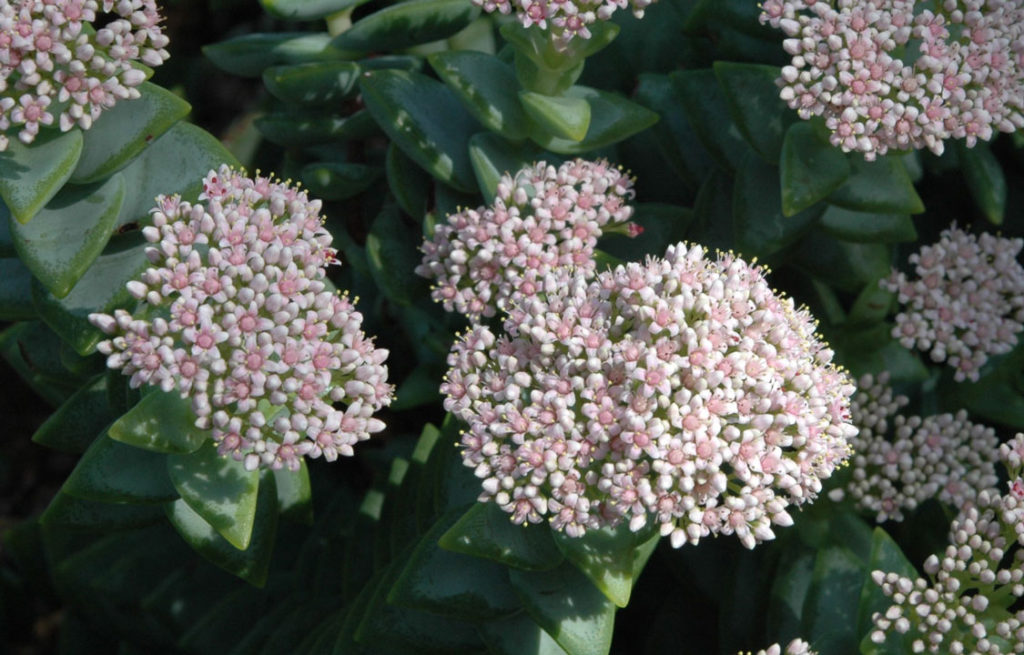
C. rupestris
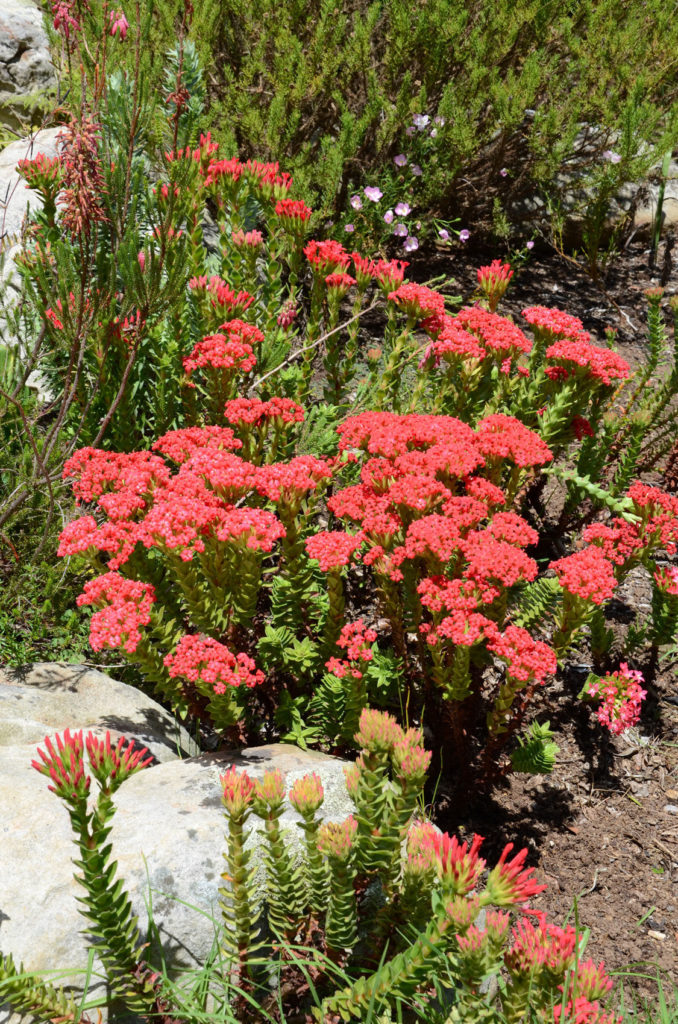
C. coccinea

